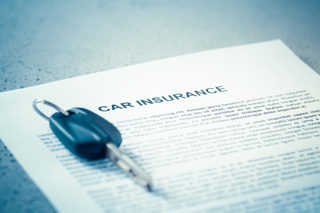Types of business cover
Class one covers the vehicle in connection with the driver’s job, for example driving to different sites away from their place of work. It may also cover a spouse for the business use, but not another named driver – so it’s important to check the insurer’s wording. It will exclude commercial use (such as the delivery of light goods) and selling (such as door-to-door).
Class two has a number of variations depending on the insurance provider. The policy will usually cover both the policyholder and a named driver for the business use, although some insurers may stipulate that the two must work in the same occupation. Class two will still exclude commercial use and selling.
Class three will provide business cover for the transportation of light goods, for example meals or flower delivery, and some selling purposes such as door-to-door sales.
Source: Arval
Case study: anonymous fleet
A company which has more than 1,000 grey fleet drivers found 10% did not have the correct insurance.
The issue came to light when the business’s fleet manager took responsibility for the grey fleet. Previously, drivers simply declared on the company’s expenses system that they had insurance.
He has had to educate drivers about what is considered ‘business use’ and what is ‘commuting’ and when they need business cover.
“Drivers thought that if they weren’t claiming back the mileage they didn’t need business insurance,” he says.
He has also had to explain to drivers that although some insurers charge extra for ‘business use’, the employee receives compensation through the Approved Mileage Allowance Payments (AMAP) rate, which includes insurance costs.
The administration burden has been made worse for the fleet manager due to inconsistent wording on insurance certificates.
“Generally the wording on insurance cover notes is ambiguous,” he says.
“Some just say ‘social, domestic and business’ but does that mean business on behalf of their employer or does it mean self-employed business?
“Grey fleet is getting more prominent and there needs to be consistent wording so that the employer knows the driver has the correct insurance.
“I’ve had to hold people back from driving on business until they have confirmation from their underwriter what their definition of business use is.
“It’s particularly an issue with internet insurers.
“The industry could make it so easy by standardising certain phrases.”
The fleet manager has considered extending the company’s insurance, but with more than 1,000 grey fleet drivers it is not practical and the premium is too expensive.
More on page 4





















Nigel Boyle - 14/03/2014 12:26
Don't assume anything. With Duty of Care and Corporate manslaughter assumptions can mean prison! We buy Business Cover so the drivers do not have to add it them selves. Our insurance is only valid with their standard insurance so we maintain a database of all their insurance, tax and MOT details that automatically emails when they are expiring. We also get drivers to sign a DVLA mandate that lasts 5 years and allows checking of their license whenever we deem necessary during that time.